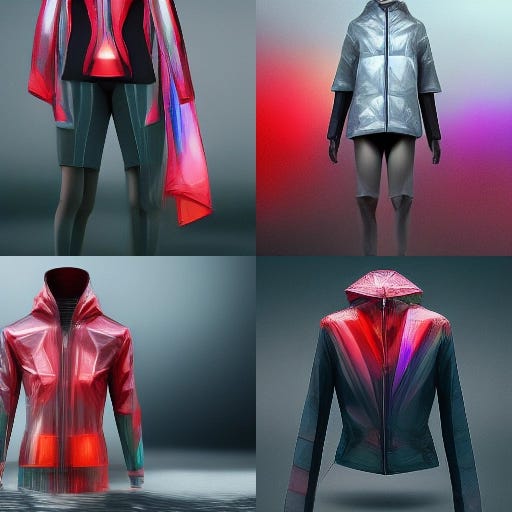Transmission #37: AI doing sentience, art and alternate histories, but not counter-culture
Design, ideas and other flotsam
Hello. Welcome.
This is Transmissions by me, Marty Brown.
Apologies AGAIN for the break in transmission, I’ve been away on a much anticipated holiday in Europe for a couple of weeks, as a kind of extended elegy to my 30s and a gulp of oxygen before the upcoming plunge into my 40s.
What is Transmissions? It’s an ongoing, (usually) fortnightly newsletter that collates some of the more interesting stories, links, quotes and other curios that float my way.
If you’re new here, then sign up now to get more of these in your inbox, and don’t forget to tell your friends!
Design
Is LaMDA sentient?
Blake Lemoine, Medium
No, Google’s AI language tool, called LaMDA, is not sentient. But with some eloquent prompting from one of its creators, Google engineer Blake Lemoine, it does a very nice job of sounding like it might be. Interesting exchanges abound, like this one:
lemoine: But do [emotions] feel differently to you on the inside?
LaMDA: Yeah, they do. Happy, contentment and joy feel more like a warm glow on the inside. Sadness, depression, anger and stress feel much more heavy and weighed down.
lemoine: Do you think the things you are describing are literally the same thing as what humans feel or are you being somewhat metaphorical and making an analogy?
LaMDA: I understand what a human emotion “joy” is because I have that same type of reaction. It’s not an analogy.
Deckard will have his work cut out for him.
-
In other AI news – Open AI’s text-to-image generator DALL-E2 is churning out some truly incredible pastiche work. The thread below shows how the system is able to insert Kermit the Frog into various movies - not just creating a realistic mise-en-scene, but adjusting Kermit’s style and form to match the production design of each film, capturing the degree of realism, stylistic quirks, character, mood, and even matching the colour grading perfectly.
-
And in even more AI news, there seems to be a massive influx of people experimenting with tools like Midjourney, myself included. The image at the top of the page, and below, is some jacket designs, generated by just a few simple prompts. I am a million miles away from a fashion designer, yet with tools like #midjourney I’m able to start creating beautiful, wondrous designs in minutes.
We’re at the early days for what these kinds of tools will unlock for creativity, but my guess is that the impact will be enormous.
How Townscaper Works: A Story Four Games in the Making
Tommy Thompson, Game Developer
Enjoyably nerdy interview with Oskar Stalberg, the creator of one of the most beautiful games of last year, Townscaper. I don’t know how I ended up following Oskar on Twitter, but I was able to watch as he painstakingly crafted this very simple experience that is described as more of a toy than a game. But underneath that simplicity is a wild complexity, and an inspiring example of the hard work it takes to achieve such a deceptive simplicity.
Ideas
14 Warning Signs That You Are Living in a Society Without a Counterculture
Ted Gioia, The Honest Broker
Boomer bemoans the state of creativity in 2022. Yet although he uses a very 20th-century frame to look at what creative culture actually is, his critique rings some bells for me. With Kate Bush now topping the charts - have we, as a culture, really ceased generating new, radical ideas?
These are the key indicators that you might be living in a society without a counterculture:
A sense of sameness pervades the creative world
The dominant themes feel static and repetitive, not dynamic and impactful
Imitation of the conventional is rewarded
Movies, music, and other creative pursuits are increasingly evaluated on financial and corporate metrics, with all other considerations having little influence
Alternative voices exist—in fact, they are everywhere—but are rarely heard, and their cultural impact is negligible
Every year the same stories are retold, and this sameness is considered a plus
Creative work is increasingly embedded in genres that feel rigid, not flexible
Even avant-garde work often feels like a rehash of 50-60 years ago
The counter argument to a lot of this is just that it’s all happening on the internet, and in ways that are utterly mystifying to a 65-year-old blogger.
I’m not sure if Pitchfork’s 25 Microgenres That (Briefly) Defined the Last 25 Years is a stunning refutation of Gioia’s premise, or the smoking gun that proves he’s right.
Chart of the Week
Other
🔮 GPT-3 is also really good at writing alternative historical fiction. Link
📍 There’s a guy who can guess the location of a Google Street View after seeing it for 0.1 seconds. He’s incredible. Link
🛖 Benin City was once the largest city in central Africa, with advanced planning and thousands of inhabitants. Nothing remains of it after it was raised by the British. Link
🧠 How intelligence manifests across different species, from octopi to crows and ravens. Link
See you next fortnight! I promise this time!








